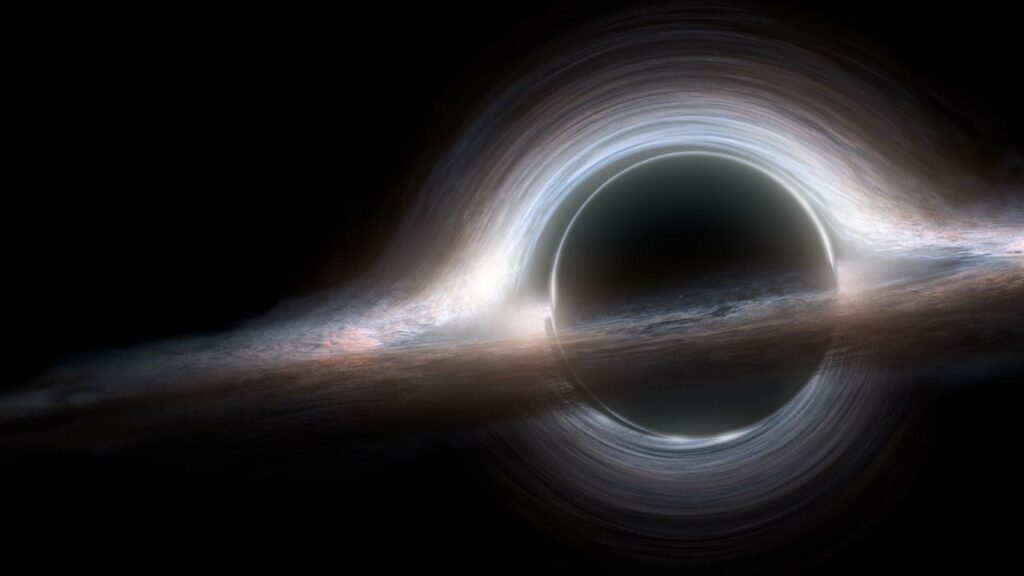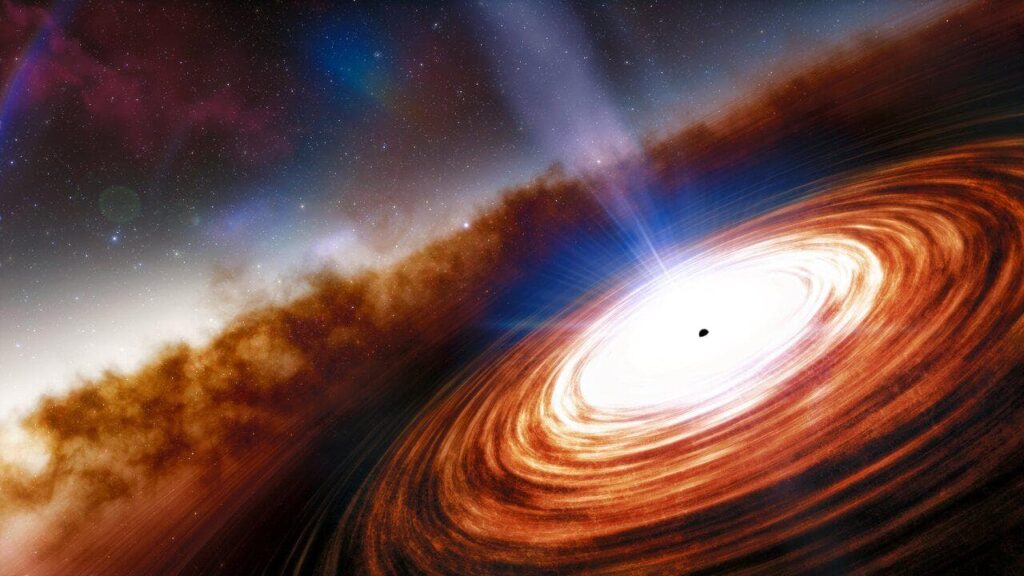The winds emitted by supermassive black holes in the first billions of years of the Universe’s existence were much stronger than modern ones. They were so powerful that they actually slowed down the growth of the black holes from which they emanated. This is stated in an article by Italian researchers published in a recent issue of the journal Nature.
Mechanism of black hole wind formation
Contrary to popular belief, black holes do not absorb all the matter in their surroundings. Part of the matter that is part of the accretion disks surrounding them is ejected into the surrounding space — something in the form of polar jets, and something in the form of wind. This is the name of a stream of particles that move in a spiral around a black hole and gain such high speeds that they are then ejected into the surrounding space.

The winds of black holes have a significant impact on their galaxies. For example, they can destroy gas clouds, slowing down the processes of star formation. But, apparently, their role in the evolution of galaxies is even more significant than previously thought.
Quasar Winds
Using the X-shooter receiver mounted on the ESO’s Very Large Telescope, a team of Italian astronomers studied 30 quasars (galaxies with extremely active black holes in the center) observed in an era when the age of the Universe was from 500 million to 1 billion years. It turned out that they are the source of extremely powerful winds. Their speed reaches 17% of the speed of light and they are 20 times more powerful than the winds in quasars observed in the epoch 4 billion years after the Big Bang.

According to the researchers, at the dawn of the Universe, black holes grew much faster than their host galaxies. Then some kind of restrictive mechanism began to operate, bringing their growth in line with the growth rate of galaxies. Scientists believe that it was the winds that became this mechanism. The energy released by them was so great that it interfered with the accretion of matter into black holes, slowing their rapid growth. Thus, they enter a phase of “coevolution” with their galaxies, which continues to this day.
Recall that astronomers recently published the first image of a black hole located in the center of our Milky Way.
According to https://phys.org
Follow us on Twitter to get the most interesting space news in time
https://twitter.com/ust_magazine

